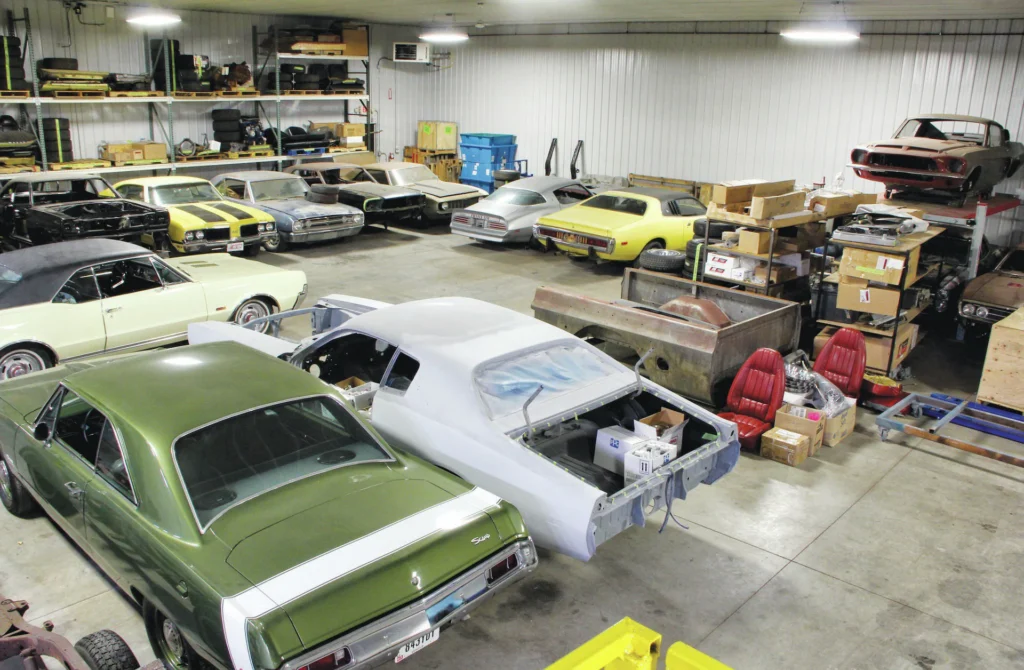Restoring a classic car is an exciting and rewarding project, but choosing the right vehicle to restore is a critical first step. Whether you’re a seasoned car enthusiast or a first-time restorer, finding the right car to restore can make all the difference in ensuring the project is both successful and enjoyable. At Vintage Hammer Garage, we’ve helped many car lovers find and restore their dream vehicles. In this guide, we’ll help you understand how to choose the right classic car for restoration.
1. Understand Your Goals and Budget
Before you begin searching for a classic car to restore, it’s important to set clear goals for your project. Are you restoring a car for personal enjoyment, investment purposes, or as part of a collection? Understanding your motivations will help guide your decision-making process.
-
Personal Enjoyment: If you’re restoring a car to drive and enjoy, you may want a vehicle that is both fun to drive and relatively easy to restore. Look for cars that are known for their performance, reliability, and style.
-
Investment: If you’re restoring a car for financial gain, choose a model with high potential for appreciation. Cars that are rare, desirable, or historically significant tend to offer the best return on investment.
-
Collection Piece: If you’re restoring a car to add to a collection, look for models that have historical or sentimental value, and focus on originality rather than modification.
In addition to your goals, set a realistic budget. Restoration costs can vary greatly depending on the car’s condition, the rarity of parts, and the extent of the restoration work needed. Be sure to factor in labor, parts, and any custom work you might want.
2. Research the Model and Make
Once you’ve set your goals and budget, it’s time to research potential classic cars. Some cars are easier and more affordable to restore than others, while others may present challenges such as limited parts availability or complicated mechanical work.
-
Popular Classic Cars for Restoration: Popular models such as the Ford Mustang, Chevrolet Camaro, and Volkswagen Beetle tend to have a large following, which means that parts are readily available, and restoration resources are abundant.
-
Rarer Vehicles: If you’re looking for something rare, such as a 1960s Jaguar E-Type or a classic Porsche 911, the restoration process may be more complex and expensive, but the end result can be a unique and highly valuable car.
-
Factory Original vs. Modified: Some people prefer to restore cars to their factory specifications, while others may want to customize their cars with modern upgrades. Decide which approach fits your goals before selecting a car to restore.
3. Assess the Condition of the Car
The condition of the vehicle is one of the most important factors to consider when choosing a classic car for restoration. While all cars need work, the degree of restoration required will affect the cost, time, and effort needed to complete the project.
-
Body Condition: Check for rust, dents, and structural damage. Rust is often the biggest challenge in classic car restoration, particularly in areas like the floor pan, fenders, and rocker panels. Extensive rust may require complete body panel replacement, which can significantly increase restoration costs.
-
Engine and Mechanical Condition: A car with a damaged or missing engine will require more extensive mechanical work. If you’re not familiar with engines, you may want a vehicle that still has its original engine or one that’s easier to repair.
-
Interior and Trim: While cosmetic restoration is often easier than mechanical work, the interior can be costly to restore. Look for cars with good interior panels, seats, and trim, or determine if parts are available for the model.
Tips for Evaluating Condition:
-
Inspect for Rust: Rust is a common issue in classic cars, so thoroughly inspect the car’s body, undercarriage, and wheel wells for signs of rust.
-
Check the Frame: Ensure that the frame is solid. A bent or broken frame can be costly to repair, and in some cases, it may not be worth restoring.
-
Examine the VIN and Documentation: Check the car’s VIN (Vehicle Identification Number) to ensure it’s legitimate. A car with original paperwork and history may have a higher value once restored.
4. Availability of Parts and Restoration Resources
One of the most important aspects of choosing the right car for restoration is the availability of parts. Classic cars that are popular or widely produced tend to have a larger network of suppliers for original parts, aftermarket parts, and restoration kits.
-
Parts Availability: Make sure parts for the car you’re considering are readily available. Cars like the Ford Mustang or Chevrolet Corvette have an extensive aftermarket parts network, making restoration easier. For rarer vehicles, you may need to source parts from specialty suppliers or even fabricate custom parts, which can be costly and time-consuming.
-
Restoration Guides and Resources: Having access to restoration guides, videos, and online communities can be invaluable. Popular models tend to have more resources available, which can make the restoration process smoother and more enjoyable.
5. Evaluate the Cost vs. Value of the Restoration
While restoration can increase the value of a car, it’s important to realistically assess the potential return on investment. Some cars have a higher resale value once restored, while others may not see significant financial gains despite the amount of work put in.
-
High-Value Classics: Cars like the Porsche 911, Shelby Cobra, or Corvette tend to have a higher resale value after restoration, making them a good investment if you’re looking to sell after completing the restoration.
-
Emotional Value: Even if the car doesn’t bring a huge financial return, consider the emotional or personal value. Restoring a car that holds sentimental value can be a highly rewarding experience, regardless of its market value.
6. Consider Your Skill Level and Resources
Restoring a classic car is a complex task that requires a mix of skills, including mechanical work, body repair, painting, and interior restoration. If you’re new to car restoration, you may want to start with a car that’s in better condition or more straightforward to work on. However, if you’re experienced or working with a professional shop, you can take on more challenging projects.
Conclusion
Choosing the right classic car for restoration is a critical step in ensuring that your project is successful and enjoyable. By considering factors such as your goals, budget, the car’s condition, parts availability, and potential resale value, you can make an informed decision that will lead to a rewarding restoration experience. At Vintage Hammer Garage, we’re here to help guide you through the process, whether you’re selecting your next project or ready to bring a car back to life.
Ready to start your restoration journey? Contact us today for advice or to discuss how we can help bring your classic car dream to life.

